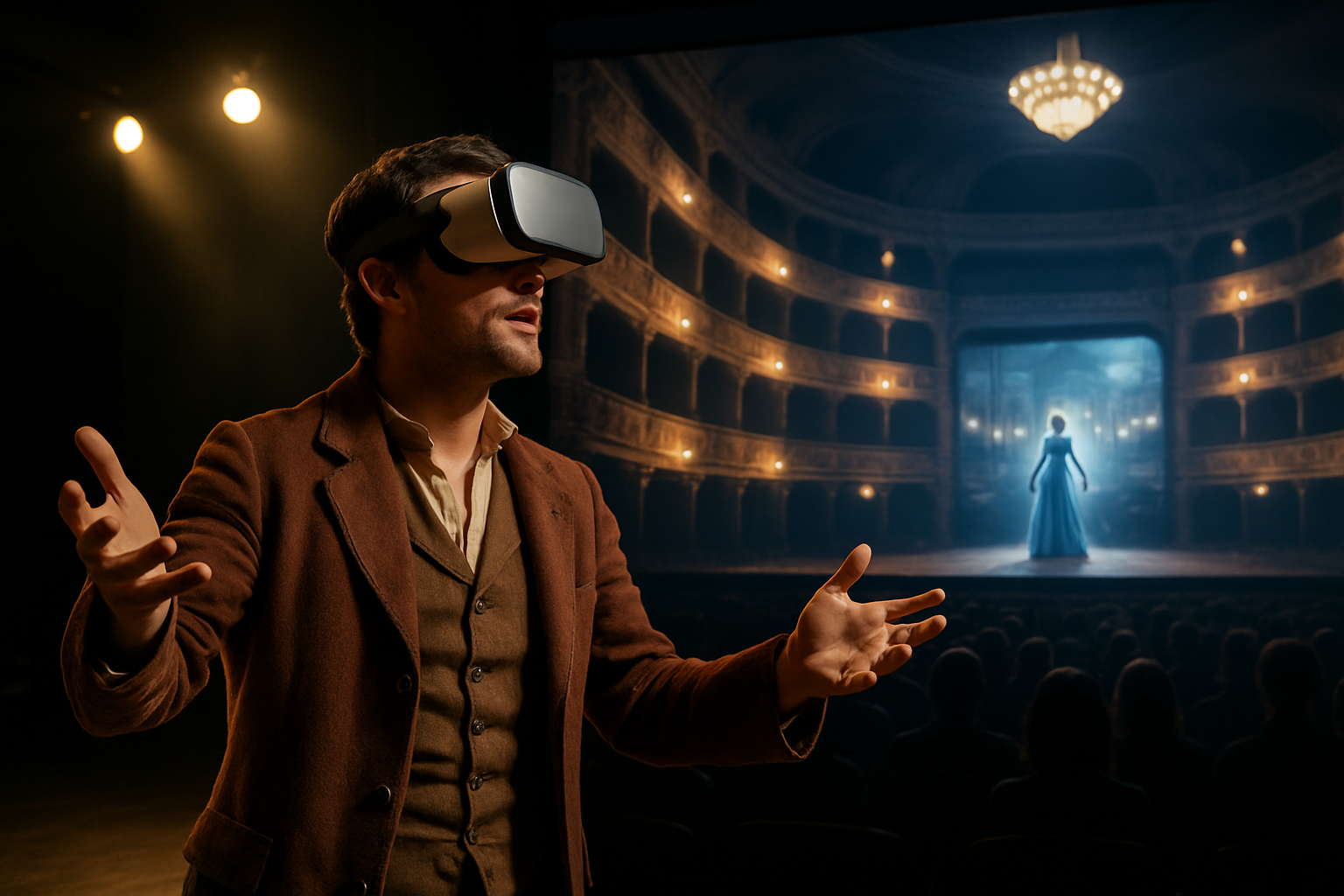Virtual Reality Opera: A New Frontier in Musical Performance
The fusion of cutting-edge technology and classical art forms is revolutionizing the world of opera. Virtual Reality (VR) opera, a groundbreaking approach to musical storytelling, is pushing the boundaries of traditional performance and audience engagement. This emerging genre combines the power of immersive technology with the emotional depth of operatic expression, creating a unique and captivating experience for music lovers and tech enthusiasts alike.

Technological Advancements Driving Innovation
The rapid evolution of VR hardware and software has been instrumental in the development of VR opera. High-resolution displays, improved motion tracking, and more powerful processors have enabled creators to craft increasingly sophisticated and immersive experiences. Spatial audio technologies have been particularly crucial, allowing for the precise placement of sound sources in a three-dimensional space, enhancing the sense of presence and realism for the audience.
Redefining the Audience Experience
One of the most significant impacts of VR opera is the transformation of the audience’s role from passive observer to active participant. In traditional opera, viewers are confined to their seats, watching the performance unfold on a distant stage. VR opera breaks down this barrier, placing the audience at the center of the action. Viewers can move around virtual sets, interact with digital characters, and even influence the narrative through their choices and movements.
Challenges in Production and Performance
Creating a VR opera presents unique challenges that blend traditional operatic skills with cutting-edge technical expertise. Composers must consider how their music will be perceived in a 360-degree environment, while librettists grapple with non-linear storytelling possibilities. Performers face the task of acting and singing for virtual cameras, often without the immediate feedback of a live audience. Directors and designers must reimagine staging concepts for a medium where physical constraints no longer apply.
The Future of VR Opera
As technology continues to advance, the potential for VR opera grows exponentially. Industry experts predict that future productions will incorporate even more interactive elements, possibly including AI-driven characters that respond dynamically to audience behavior. The integration of haptic feedback and scent technologies could further enhance the sensory experience, creating a truly immersive operatic world.
Accessibility and Democratization
VR opera has the potential to make this traditionally elite art form more accessible to a wider audience. By removing the need for physical theater spaces and allowing for virtual attendance, VR operas can reach viewers around the globe. This democratization of opera could lead to a renaissance in the genre, attracting new audiences and inspiring fresh creative approaches.
Critical Reception and Artistic Debate
The emergence of VR opera has sparked lively debate within the classical music community. Traditionalists argue that the technology detracts from the purity of live vocal performance, while proponents see it as a natural evolution of the art form. Critics praise the innovative storytelling possibilities but question whether the emotional impact of a live performance can be replicated in a virtual space.
Notable VR Opera Productions
Several groundbreaking VR opera productions have garnered attention in recent years. The Welsh National Opera’s Magic Butterfly project reimagined classic arias in virtual environments, allowing audiences to explore fantastical digital landscapes. The Netherlands-based Miriam Teak Lee’s Parkway VR Opera pushed the boundaries of the form by incorporating real-time motion capture and audience interaction into a live performance streamed in VR.
Educational Applications
Beyond entertainment, VR opera is finding applications in music education. Virtual platforms allow students to study operatic techniques up close, observing the intricate details of vocal production and stagecraft. Some conservatories are experimenting with VR tools to help aspiring singers practice performing in simulated concert halls and opera houses, preparing them for the pressures of live audiences.
The Intersection of Art and Technology
VR opera stands at the intersection of art and technology, challenging our perceptions of what constitutes a live performance. As this new genre continues to evolve, it raises intriguing questions about the nature of creativity, the role of the audience, and the future of classical music in a digital world. Whether viewed as a revolutionary step forward or a fascinating experiment, VR opera is undoubtedly reshaping the landscape of musical performance and opening up exciting new possibilities for artistic expression.





